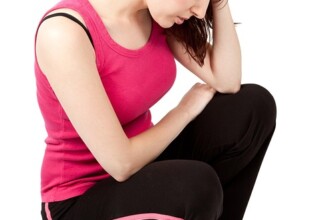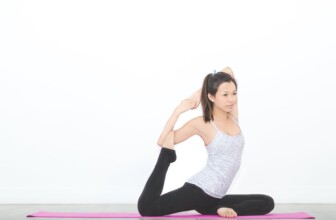Unlocking Wellness: The Healing Power of Reflexology
Introduction
Reflexology is a holistic healing practice based on the principle that specific areas on the feet, hands, and ears correspond to different organs and systems of the body. By applying pressure to these reflex points, practitioners aim to promote relaxation, improve circulation, and facilitate the body’s natural healing processes.
This article delves deep into the healing power of reflexology, examining its history, benefits, scientific basis, techniques, case studies, and more. We explore how it can support overall wellness and the potential future of this ancient practice.
1. A Brief History of Reflexology
Reflexology is not a modern invention; it has roots that extend thousands of years. The origins can be traced back to ancient Egypt, where hieroglyphs in tombs depict people receiving foot treatments. In ancient Chinese medicine, the concept of applying pressure to specific points for health purposes has existed for centuries.
The modern form of reflexology began to take shape in the early 20th century, thanks to the work of practitioners like Dr. William H. Fitzgerald, who introduced the concept of “zone therapy.” He proposed that the body could be divided into ten vertical zones, each corresponding to different areas that could be stimulated through the feet and hands.
2. How Reflexology Works
The theory behind reflexology hinges on the idea that the body is divided into various reflex points located on the feet and hands. By pressing these points, reflexologists aim to address imbalance and stimulate the body’s inherent ability to heal itself. This process works on several levels:
- Physical: Stimulating reflex points can help alleviate pain, improve circulation, and assist in detoxification.
- Emotional: Reflexology can induce relaxation, relieve stress, and promote emotional balance.
- Energetic: Many believe that reflexology helps to balance energy flow within the body, promoting overall wellness.
3. Benefits of Reflexology
Reflexology offers a wide array of potential benefits, making it a popular choice for many individuals. Some of the notable health improvements include:
- Stress Relief: Reflexology is known for its calming effects and ability to reduce stress levels.
- Pain Management: Regular sessions have been reported to alleviate tension headaches, migraines, and chronic pain.
- Improved Circulation: Increased blood flow can enhance overall health and vitality.
- Enhanced Immunity: By stimulating different parts of the body, reflexology may help bolster the immune system.
- Digestive Health: Many individuals report improved digestive functions following reflexology treatments.
4. Techniques and Practices in Reflexology
Reflexology can be performed in various settings, from spas and wellness centers to private offices. There are several techniques used in reflexology, including:
- Thumb Walking: This technique involves using the thumb to create small circular movements on reflex areas.
- Hooking: The practitioner hooks the thumb or fingers to apply pressure to reflex points, providing targeted stimulation.
- Finger Rolling: A gentle roll of the fingers over reflex points helps to relax and stimulate those areas.
Sessions typically last between 30 to 60 minutes, and clients are encouraged to discuss any specific health concerns prior to their session for a more personalized approach.
5. Case Studies: Real-Life Reflexology Experiences
Real-life experiences can shed light on the effectiveness of reflexology. Below are a few case studies that illustrate its potential benefits:
Case Study 1: Stress Management
Jane, a 35-year-old marketing executive, struggled with high levels of work-related stress. After attending weekly reflexology sessions, she reported a significant decrease in stress levels, improved concentration, and a better overall mood. Through reflexology, Jane discovered a tool that not only alleviated her anxiety but also improved her productivity at work.
Case Study 2: Chronic Pain Relief
Tom, a 50-year-old man, had been suffering from chronic back pain for several years. Traditional methods offered minimal relief until he sought reflexology. After consistent treatments, Tom noted a remarkable reduction in his pain levels and improved mobility. His experience highlights reflexology as a viable complementary therapy for pain management.
6. Scientific Research on Reflexology
While anecdotal evidence abounds in favor of reflexology, scientific studies have also examined its efficacy. Research indicates various outcomes:
- Study on Pain Management: A study published in the “Journal of Pain and Symptom Management” found that reflexology significantly reduced pain among cancer patients undergoing treatment.
- Stress and Anxiety Reduction: Research from the “International Journal of Nursing Studies” suggests that reflexology can positively influence stress and anxiety levels.
- Sleep Quality Improvement: A study in the “Journal of Holistic Nursing” indicated that reflexology may enhance sleep quality in patients, promoting better health overall.
While more extensive and controlled studies may be needed, the existing research provides compelling evidence supporting the use of reflexology as a complementary therapy.
7. Common Misconceptions about Reflexology
Despite its increasing popularity, several misconceptions about reflexology persist. Here are some common misunderstandings:
- It's Just a Foot Massage: While reflexology does use massage techniques, its intent is much deeper, focusing on restoring balance and addressing specific health concerns.
- Only for Feet: Reflexology can also be performed on the hands and ears, providing versatility in treatment options.
- It’s Painful: Reflexology should not be painful; while some areas may be sensitive, discomfort should be minimal and manageable.
8. Q&A: Your Reflexology Questions Answered
Q: How often should I receive reflexology sessions?
A: Frequency can vary based on individual needs, but many prefer weekly sessions initially, reducing to bi-weekly or monthly as they notice improvements.
Q: Can reflexology hurt?
A: Reflexology should not be painful. Some areas may feel tender, but it's essential to communicate with your practitioner. Adjustments can be made to ensure comfort.
Q: Is reflexology safe for everyone?
A: Reflexology is generally safe for most people, but it's advisable to consult with a healthcare provider, particularly for those with chronic health conditions or pregnant individuals.
Q: Can reflexology replace medical treatment?
A: Reflexology is best viewed as a complementary therapy. It shouldn't replace conventional medical treatment but can certainly enhance overall wellness.
Q: What should I expect during a reflexology session?
A: Expect a comfortable environment where you'll recline. The practitioner will examine your feet and may ask questions about your health history before initiating treatment.
Resources
| Source | Description | Link |
|---|---|---|
| American Reflexology Certification Board | Certification standards for reflexology practitioners. | www.arcb.net |
| International Institute of Reflexology | Offers extensive resources and education on reflexology. | www.reflexology-iiir.com |
| Books: “Reflexology: The Definitive Practitioner's Manual” | A comprehensive guide to techniques and theory in reflexology. | Amazon |
| Research Articles in PubMed | A repository of scientific studies on reflexology. | pubmed.ncbi.nlm.nih.gov |
Conclusion
Reflexology stands as a powerful tool for wellness, intertwining ancient wisdom with contemporary health needs. As a complementary therapy, it offers a holistic approach to managing stress, reducing pain, and promoting overall health. Numerous case studies and scientific research bolster its credibility, while continued education and practice can further unveil its potential.
Looking towards the future, there is a growing interest in integrating reflexology within conventional healthcare settings. As more research emerges, reflexology may establish itself as a recognized component of holistic treatment strategies.
In conclusion, taking the step toward exploring reflexology may not only be beneficial as a therapy but can also enhance your overall approach to well-being. Remember to seek out qualified practitioners and stay informed about the latest developments in the field.
Disclaimer: The information provided in this article is for educational purposes only and should not be considered medical advice. Always consult a qualified healthcare provider for personal medical advice and treatment.










